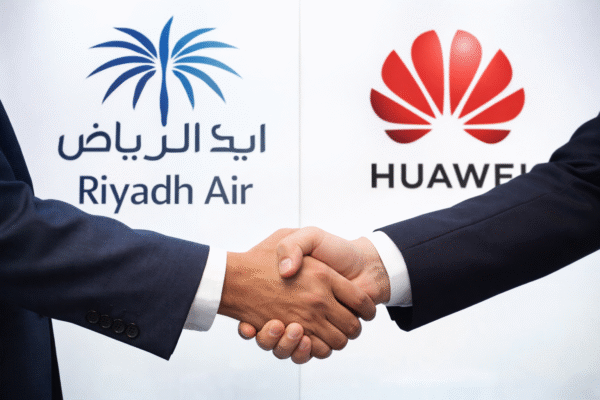Apple has introduced its slimmest smartphone yet, the iPhone 17 Air, drawing global attention not just for its design but also for a controversial decision: the complete removal of the physical SIM tray. Instead, the device relies entirely on eSIM technology, a move Apple presents as a step toward convenience and security. However, for millions of international travelers, this shift may come with significant connectivity risks in regions where eSIM adoption is still limited.
A Radical Shift in Mobile Connectivity
For decades, the physical SIM card has been an essential tool for global travelers. Arriving in a new country often meant picking up a prepaid SIM card at the airport to avoid costly roaming fees. Apple’s move away from this long-standing practice could reshape the way travelers stay connected abroad.
With the iPhone 17 Air, Apple is betting on eSIM as the universal solution for mobile connectivity. eSIM allows users to activate a mobile plan digitally without needing to insert a physical card. While this technology is gaining traction in North America and parts of Europe, its global availability is inconsistent. This leaves many travelers at risk of paying high roaming charges or struggling to find compatible local services in their destinations.
Why eSIM-Only Poses Challenges for Travelers
Apple markets eSIM as a seamless upgrade, but for international travelers, the lack of universal adoption highlights major challenges:
- Higher roaming costs: Without access to local prepaid SIMs, users may have no choice but to rely on their home carrier’s roaming service, which can be significantly more expensive.
- Patchy regional support: In parts of Asia, Africa, and Latin America, many smaller carriers do not yet support eSIM, leaving travelers with limited or no options for connectivity.
- Complicated activation: Some carriers require in-person verification or additional paperwork to activate eSIM profiles, a process that can be inconvenient for travelers with limited time.
- Tech barriers for some users: While SIM cards can be swapped with ease, managing eSIM profiles requires navigating digital interfaces, which may be challenging for less tech-savvy travelers.
These obstacles mean that while Apple envisions a future free of SIM trays, the present reality for many travelers is far less convenient.
Where eSIM Adoption Falls Short
The disparity in eSIM adoption is evident across global regions.
- North America and Europe: Most major carriers have embraced eSIM technology, providing a smooth experience for travelers within these regions.
- Asia: Countries like Japan, Singapore, and South Korea offer robust eSIM options, but smaller Southeast Asian nations still lag behind.
- Africa and Latin America: Many carriers remain dependent on physical SIM cards, making eSIM-only devices difficult to use without expensive roaming plans.
This inconsistency puts travelers in a difficult position. While some destinations will offer seamless connectivity, others may leave users scrambling for costly or unreliable alternatives.
Risks and Inconveniences for Consumers
The removal of the SIM tray comes with several clear risks for travelers:
- Loss of flexibility: Travelers can no longer purchase an inexpensive prepaid SIM card on arrival, a common practice to save on data and calls.
- Carrier dependence: Users must rely on carriers to issue and activate eSIM profiles, which may involve delays or service limitations.
- Reduced accessibility: Regions with slow digital infrastructure may not support quick eSIM activations, leaving users offline when they need service most.
- Uncertainty for emergencies: Without local SIM access, travelers may face communication challenges in emergencies, where quick connectivity is vital.
How Travelers Can Prepare for the iPhone 17 Air
Despite the challenges, there are ways travelers can reduce the risks associated with Apple’s eSIM-only design:
- Check eSIM availability: Before traveling, research whether your destination supports eSIM. Many carriers provide information on their websites or through official tourism portals.
- Purchase digital travel eSIMs: Several international providers sell eSIM packages online that can be activated before arrival, offering data plans tailored for travelers.
- Keep an older phone as backup: Retaining a secondary device with a physical SIM tray ensures you can still use traditional SIM cards in regions with limited eSIM support.
- Leverage Wi-Fi and VoIP apps: Cloud-based apps such as WhatsApp, Zoom, or Skype can help reduce reliance on mobile networks, particularly when local eSIMs are unavailable.
Being proactive is key for travelers who plan to upgrade to Apple’s latest device.
Apple’s Vision Versus Traveler Reality
Apple’s push toward eSIM is part of its broader vision of simplifying hardware and embracing digital-first solutions. By removing the SIM tray, the iPhone 17 Air is slimmer, more secure, and less prone to issues like SIM theft. However, this vision does not align with the reality faced by global travelers in regions where eSIM infrastructure remains incomplete.
While Apple argues that eSIM offers improved convenience, security, and sustainability, the immediate impact for international tourists may be higher costs and fewer options for connectivity. Until eSIM becomes universally supported, the shift risks alienating travelers who rely on flexible, affordable, and accessible mobile options abroad.
Conclusion: A Double-Edged Sword for Global Travelers
The iPhone 17 Air marks a turning point in Apple’s design philosophy, but its eSIM-only approach presents a double-edged sword. For travelers moving between regions with robust eSIM infrastructure, the transition may feel seamless. For those heading to countries where support is lacking, however, the experience may be frustrating, costly, and inconvenient.
As global tourism rebounds and international mobility rises, reliable connectivity has never been more essential. Apple’s gamble may accelerate the adoption of eSIM worldwide, but in the short term, global travelers must take extra precautions to avoid being caught offline. For now, the ultra-slim design of the iPhone 17 Air may be appealing, but for many tourists, the loss of a simple SIM swap could mean more hassle than innovation.
For more travel news like this, keep reading Global Travel Wire


















